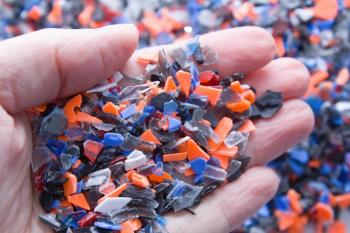
New Insights into Corrosion Threats in Solar Panels
Key Takeaways
- Corrosion in solar panels reduces efficiency, weakens mechanical integrity, and increases maintenance costs due to environmental exposure.
- SEM-EDS reveals microscopic corrosion processes, showing how oxygen, moisture, and contaminants affect panel materials.
A recent review article explores how SEM-EDS is being used to evaluate solar panel corrosion.
As the world races toward a renewable energy future, one persistent and often invisible threat continues to undermine solar power’s promise—corrosion. A recent review article published in the International Journal of Molecular Sciences explores this topic. Lead author Felipe M. Galleguillos Madrid from the Universidad de Antofagasta (Chile) and his colleagues investigated solar panel corrosion and what techniques have been used to analyze corrosion levels (1). In particular, the article highlights how scanning electron microscopy-energy dispersive spectroscopy (SEM-EDS) is one of the main techniques used for this purpose.
What is the role of spectroscopy in the energy industry?
Spectroscopy is heavily used in the energy sector, including in solar energy (2,3). Ultraviolet/visible (UV-vis) spectroscopy, for example, has helped scientists develop more durable solar panels to increase their efficiency (2). X-ray diffraction (XRD) and Fourier transform infrared (FT-IR) spectroscopy have also contributed to helping scientists unveil microstructural damage in solar panels, also contributing to the design of more durable solar panels (3).
As a result, corrosion in solar panels is not a cosmetic issue. It is an obstacle to efficient solar-to-electric energy conversion (1). Over time, exposure to humidity, UV radiation, fluctuating temperatures, and saline or polluted environments can erode the materials that make up solar modules. This degradation reduces panel efficiency, weakens mechanical integrity, and increases maintenance costs (1).
What are the main negative impacts of solar panel corrosion?
The authors highlight three main negative impacts that occur as a result of solar panel corrosion. First, surface corrosion on solar cells impairs their ability to absorb sunlight efficiently, resulting in lower energy conversion and gradual output losses (1). The accumulation of corrosion products on the surface scatters light and obstructs transmission, cutting down overall energy yield. Secondly, corrosion attacks the physical components of the panel, such as aluminum frames and polymer backsheets. This leads to cracking, delamination, and even structural failure (1). Finally, electrical contacts corroded by oxidation or moisture intrusion increase resistance and create localized “hotspots,” accelerating further damage and, in extreme cases, triggering module failure (1).
The researchers described these negative impacts to highlight the crucial role of encapsulation materials, solder joints, and conductive coatings in both the initiation and progression of corrosion. These components, meant to protect and connect, can instead become weak points when exposed to harsh environmental conditions (1). Corrosion-induced failures, the researchers argue, are heavily influenced by regional factors, such as proximity to coastal areas or high UV radiation zones, making the study of local conditions vital for designing robust photovoltaic systems (1).
How is SEM-EDS being used in solar energy applications?
SEM-EDS has allowed scientists to visualize corrosion at the microscopic level, revealing how oxygen, moisture, and chemical contaminants infiltrate and interact with panel materials.
As the authors show in their article, high-resolution SEM micrographs and EDS data presented in the study demonstrate that corrosion often begins at the edges of solar cells, where encapsulation layers are most vulnerable (1). Elevated oxygen levels at these regions indicate moisture ingress, which disrupts charge carrier generation and accelerates recombination (1). These are key factors that diminish the maximum power output of PV modules. The presence of aluminum, tin, and phosphorus residues further supports the hypothesis that elemental leaching and migration from encapsulants contribute to chemical instability and loss of performance (1).
What are the key takeaways from this study?
There are several key takeaways from this review article. One main takeaway is that emerging solutions, such as developing anticorrosive nanocoatings, improving encapsulant formulations, and integrating artificial intelligence (AI) tools for predictive maintenance, should continue to be refined (1). By using artificial intelligence (AI)-driven monitoring systems, operators could detect early signs of corrosion before visible degradation occurs, significantly extending the lifespan of solar assets and reducing operational costs (1).
Another main takeaway is that next-generation photovoltaic systems will be making corrosion management a top priority moving forward. Solar energy is becoming increasingly important in global energy production, especially as the world transitions away from fossil fuels.
Corrosion of solar panels is an ongoing challenge, but with smarter materials, deeper diagnostics, and proactive design, its damage need not be (1). Here, the authors provide a comprehensive analysis on how corrosion affects the performance, reliability, and longevity of photovoltaic (PV) systems, and the tools we have at our disposal to face this challenge head-on.
References
- Rana, Z.; Zamora, P. P.; Soliz, A.; et al. Solar Panel Corrosion: A Review. Int. J. Mol. Sci. 2025, 26 (13), 5960. DOI:
10.3390/ijms26135960 - Wetzel, W. A Beginner’s Guide to Spectroscopy in Energy Applications. Spectroscopy. Available at:
https://www.spectroscopyonline.com/view/a-beginner-s-guide-to-spectroscopy-in-energy-applications (accessed 2025-10-31). - Wetzel, W. Advances in Energy Research. Spectroscopy. Available at:
https://www.spectroscopyonline.com/view/advances-in-energy-research (accessed 2025-10-31).
Newsletter
Get essential updates on the latest spectroscopy technologies, regulatory standards, and best practices—subscribe today to Spectroscopy.



